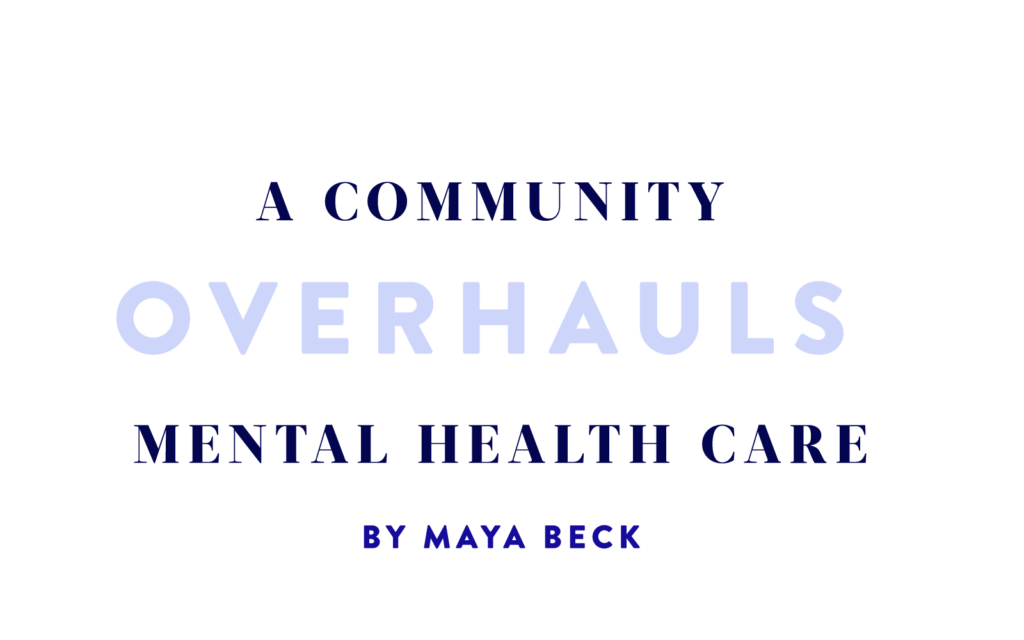
Behavior Management Systems is a recipient of the Bush Foundation’s Bush Prize for Community Innovation.
You live with your daughter and mother. Grandma’s worsening dementia makes her vocal with her regrets: “I threw away my life for you, and for what?” One day, Grandma’s words escalate into threats. She insults your daughter, corners her, strikes her. You don’t want anyone to be charged with child abuse, but not knowing what else to do, you call 911. This kind of mental health emergency happens every day, in every city from New York City to Rapid City, South Dakota. Police arrive on the scene, make an arrest and lead the person in crisis away in handcuffs. Because police have limited mental health crisis intervention training, this protocol—typically reserved for criminals—is what officers follow.
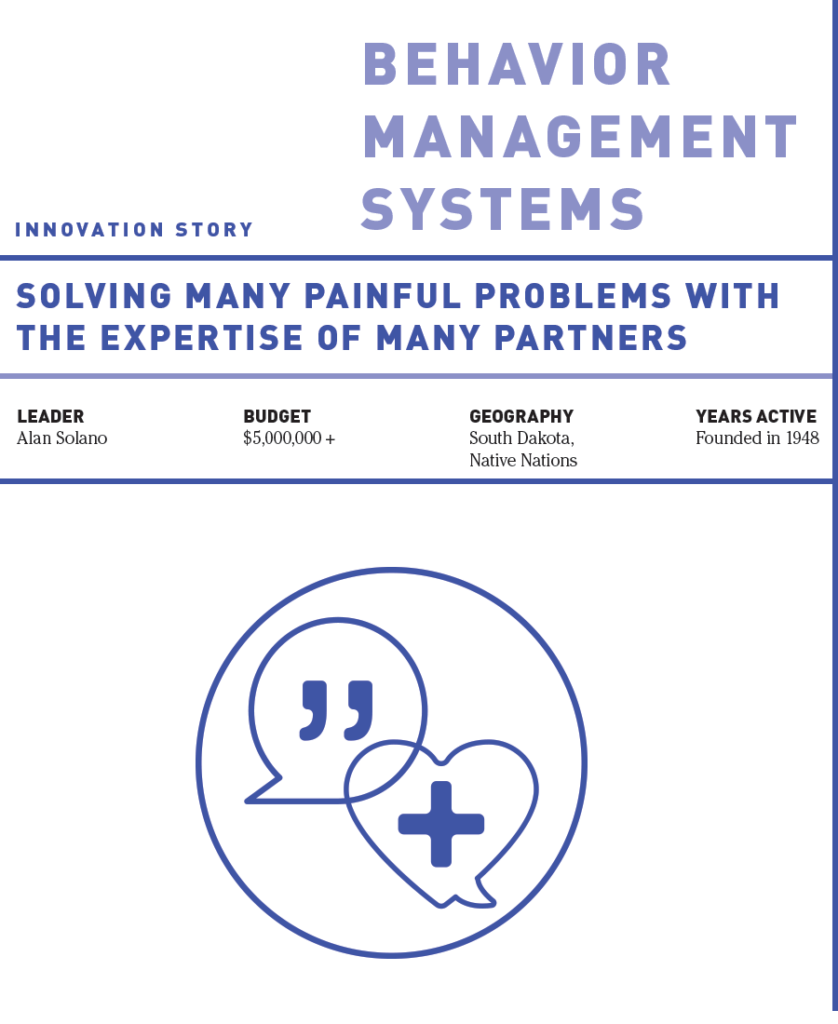
After calling 911, the person will most likely end up in the emergency room. If and when space at a psychiatric hospital opens up, they may receive temporary treatment, or be admitted and supervised. Hospitals release the majority of these individuals in under 24 hours without treating their underlying problems.
This is not how Behavior Management Systems (BMS) responds. BMS runs the Crisis Care Center (CCC), a safe harbor where adults experiencing mental health crises can receive immediate and proper care. The CCC stabilizes clients and develops tailored recovery plans to prevent future crises. BMS has improved on every step in this service delivery system. Most importantly, they know that the best environment for someone in a mental health crisis is the CCC.
Alan Solano, chief executive officer of BMS, is one of the strongest voices in the Black Hills Mental Health and Substance Abuse Collaborative, a group of nearly 40 area organizations working to create a more responsive service delivery system in western South Dakota. The Collaborative couldn’t improve people’s access to emergency services by solving one problem alone. “It was not an issue where you could point to just one failure. It was not just a problem belonging to the hospitals, or to emergency response. It was a community problem,” Alan said. So Alan’s job was to make sure stakeholders felt a sense of shared ownership of the failures and the solutions.


TO GET A DIVERSE GROUP OF STAKEHOLDERS ON THE SAME PAGE, Alan recommended using a data-based approach. Rather than solely relying on anecdotal commentary from partners’ stories, advice and experiences, the group asked, “Does the data support that?” In this way, data drove the collective vision.
Alan never wavered under the daunting task of creating one collaborative system for so many agencies. He took comfort in knowing the right people were at the table, both those with the power to say “yes” and the staff that knew how to do the work. Stakeholders broke into subcommittees to inform a manageable process. With meetings down to a reasonable size for workable conversations, an oversight committee of key players synthesized the work for the entire team. The process of organizing the Collaborative, identifying main concerns and creating a process to address those concerns took 18 months.
Once the Collaborative rallied, it could offer a direct response to community needs. To run the Crisis Care Center, Behavior Management Systems now works with four other mental health providers to offer follow-up care to patients. The four organizations—Catholic Social Services, Lutheran Social Services, Youth and Family Services, and City/County Alcohol & Drug Programs—share staffing and financial responsibilities. Each organization dedicates at least one day a week to receiving CCC clients. The CCC matches the needs of the client to the organization that can best serve them. BMS, for example, tends to take on the most severe cases, such as people diagnosed with bipolar disorder and schizophrenia. Because clients can only stay in the CCC for up to 24 hours, its partnerships with other mental health providers ensure that another organization will be ready and able to take on the client immediately after their release.

BMS trains first responders in crisis intervention so they can recognize and understand mental illness and prevent harm. Alan believes jail is the wrong setting for treatment. The CCC provides the community with crisis options other than inpatient psychiatric care, incarceration and involuntary admission to detoxification services. It tracks the number of clients diverted from jail, detox, the emergency room or the local behavioral health center. The number of diverted clients increased from more than 300 to more than 700.
BMS recognizes that people who suffer mental illness often need support in other areas. Much of the work done within the Collaborative is simply managing the partnerships to determine who would be best to provide the necessary support for important services like food and shelter. The Collaborative depends on a diverse network of organizations that include psychiatrists, sheriffs, social workers, parents, school superintendents and ministers. Each stakeholder brings a distinct area of expertise and a unique view of mental health as it affects them and their clients.
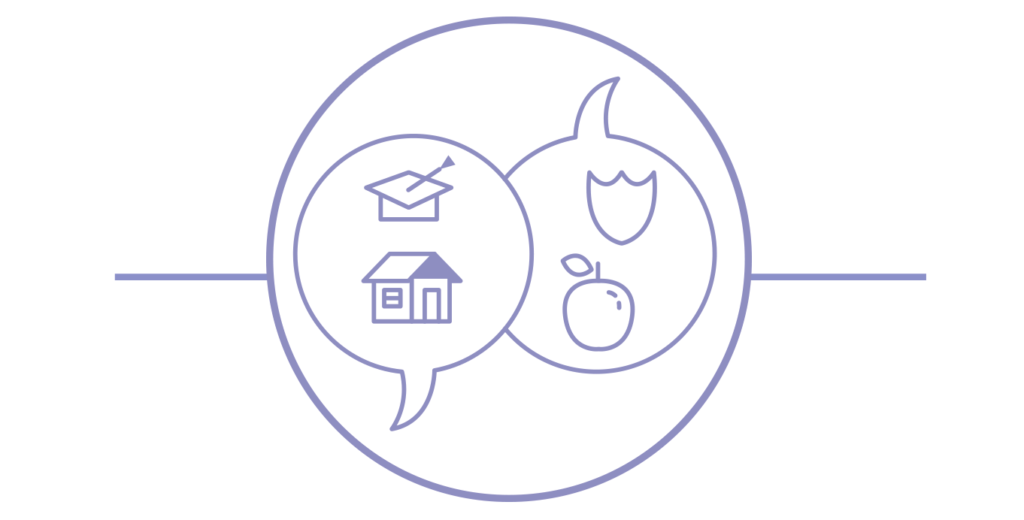

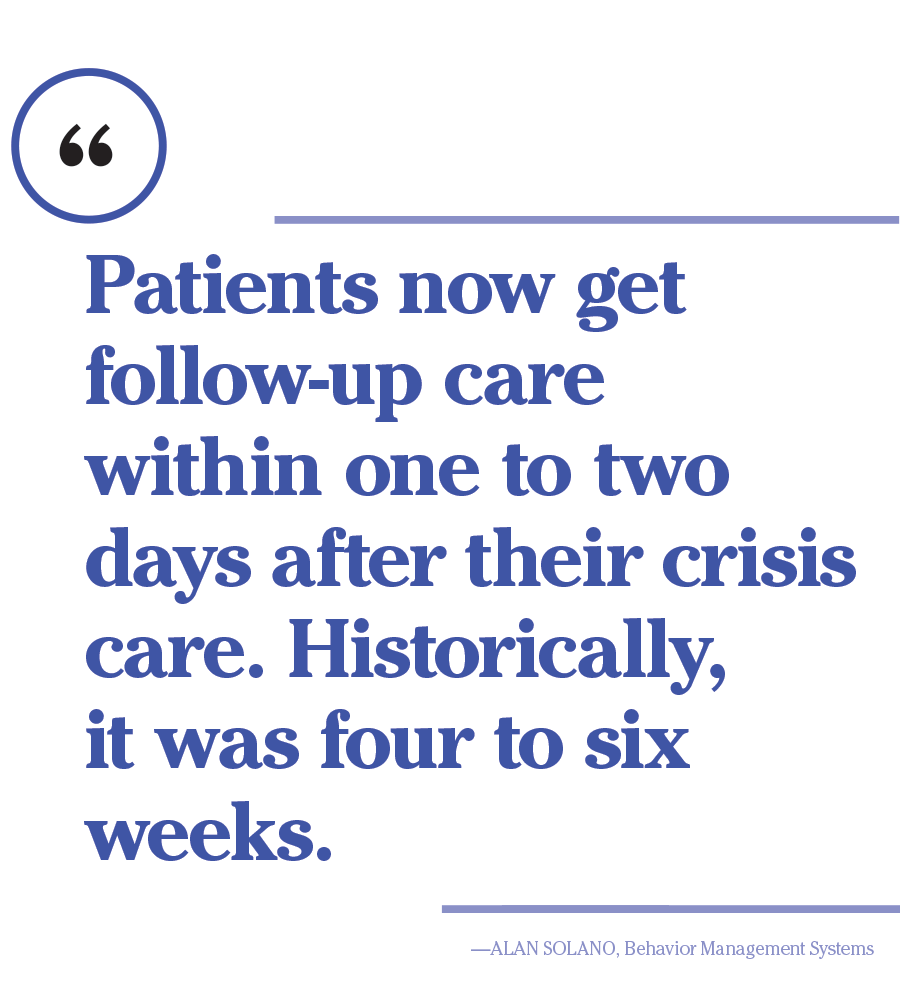
In the past, large-scale surveys of the Black Hills community found that drug and alcohol abuse, along with the lack of adequate mental health support, were among the greatest issues facing the area. The Collaborative also discovered that residents knew little about the local mental health services available to them. Alan and the Collaborative banded together to run television and radio ads to build community awareness, and they promoted the 211 information helpline as a referral service. It worked.
The CCC originally received the bulk of its referrals from hospitals and law enforcement. For example, in the opening year, the police department and regional hospital referred 400 clients out of approximately 500 total referrals. By 2014, the CCC served nearly 1,000 clients, half of whom were self-referred. This means, even as the number of patients grows, hope is alive because the majority of patients proactively seek services, rather than being forced into treatment. Because of the Collaborative’s efforts to rally together, the entire community benefits.
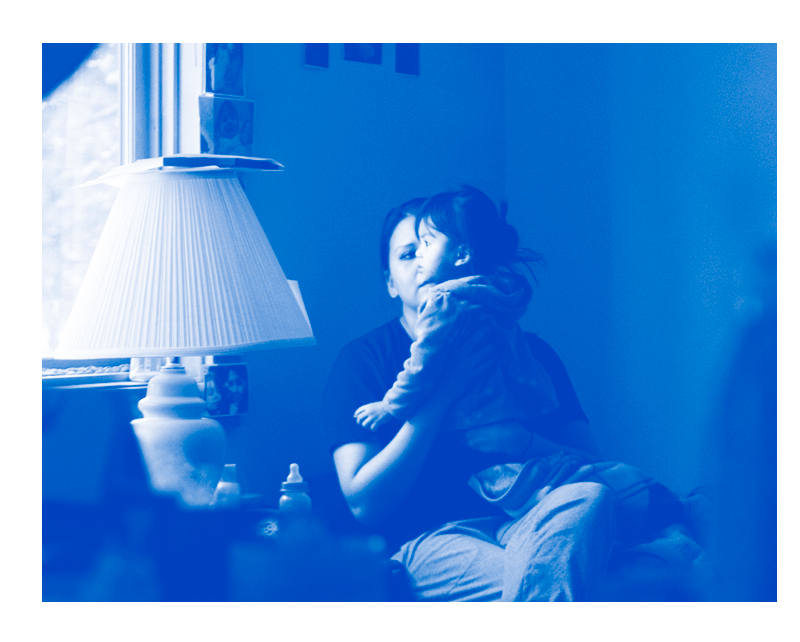

Still, the Collaborative continues to listen. It holds annual listening sessions during Mental Health Awareness Month in May. It’s a time to update the community on recent work. It’s also an opportunity for BMS to learn directly from the community. The audience polling technology BMS uses at these meetings allows residents to weigh in by voting on community needs, giving BMS instant feedback. BMS finds important data to help inform their decisions, and the community builds trust in BMS. Those in search of help finally know where to go and how to get relief during a mental health crisis—one simple concept built from many partnerships and many solutions to complex problems.
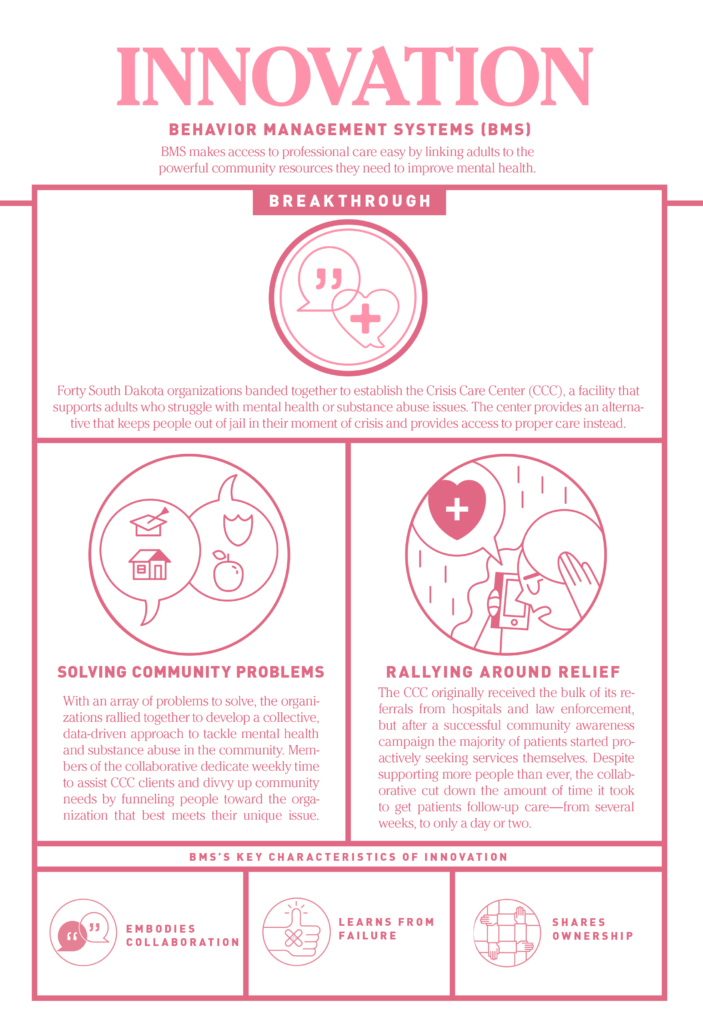

Produced in partnership with the Bush Foundation
to showcase the culture of innovation
behind its Bush Prize winners.
Contributors




